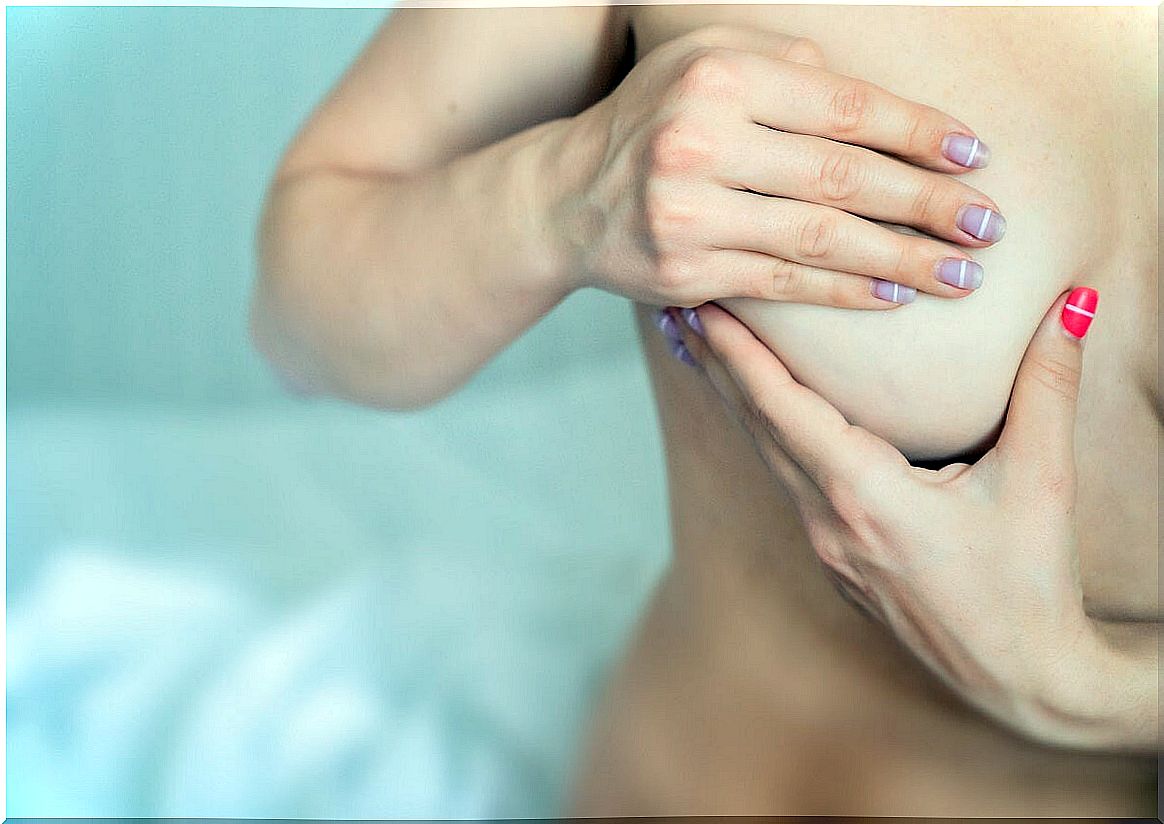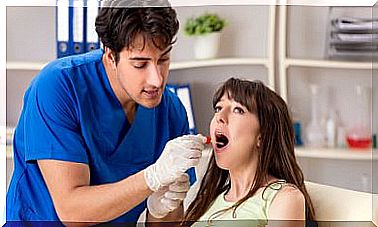Nipple Discharge: Causes And Recommendations
Nipple discharge can be a very annoying problem, but in all cases there are underlying causes that explain it. These range from breast dysplasia to cancer, in very few cases.
In medical terms, this condition is called “telorrhea” and refers to any discharge from the breast outside of pregnancy or breastfeeding. Galactorrhea is a similar term, but in this case it refers to the production of milk, and it usually has associated hormonal causes. Do you want to know more about it? Next, we clarify your doubts. Keep reading!
Nipple discharge: are there other symptoms?
In general, fluid leakage through the nipple or small holes located in the areola will always be observed. The nature of this substance depends a lot on its physical characteristics, and in practice they are quite varied. The appearance of these secretions may be the following:
- Whitish or milky.
- Serous, pale or slightly yellowish.
- Reddish.
- Combinations between the aforementioned.
Depending on its cause, there may be permanent pain or only during fluid production. It is also possible to detect a mass or nodule with different characteristics (size, location, mobility and texture).
In most cases, the discharge is unilateral (it affects only one breast), although it can be bilateral when there are hormonal problems. There may also be nipple retraction or redness of the skin, suggesting underlying inflammation.

Reasons why nipple discharge can occur
There is a huge list of causes that can produce these types of symptoms. For practical reasons, these can have a mammary origin (such as infections or cancer) or extramammary (brain tumors or ingestion of medications).
Most frequent causes
We will review the case of localized infections in the breast, the ingestion of psychotropic drugs, intraductal papilloma and the fibrocystic condition of the breast.
1. Localized infections in the breast
The mastitis or breast abscesses are frequent causes of discharge, after the opening of a conduit that allows the output of the content. Of course, the discharge is purulent and has a bad odor, in addition to tenderness, increased volume, and redness of the skin.
It is much more frequent during lactation (due to the manipulation of the nipple by the baby), but it can also occur outside this period.
2. Intake of psychotropic drugs
Prolactin is a hormone responsible for stimulating the production and secretion of breast milk. In turn, it is regulated in the brain by a neurotransmitter known as dopamine.
Treatment with some drugs that act directly on the central nervous system may involve a change in the body’s dopamine levels, which also affects the production of prolactin and breast milk.
Some medications that can cause milk secretion outside the lactation period are phenothiazides, some antidepressants and anxiolytics.
3. Intraductal papilloma
Intraductal papilloma is a frequent benign condition, although due to its characteristics it tends to attract a lot of attention. In fact, before its presence, several complementary studies are required.
The discharge in this disease is usually spontaneous, and it occurs frequently in premenopausal patients. Like the previous example, the pathology originates in the milk duct.
There is a proliferation of cells that eventually leads to the formation of a small mass capable of producing serous secretion with some blood (serohematic).
4. Fibrocystic condition of the breast
Also known as “mammary dysplasia” is, according to several epidemiological studies, one of the most common benign pathologies of the breast. It consists of the proliferation of “supporting tissue” (connective) that can occur, even during the reproductive life of a woman.
This leads to the formation of moderately sized masses, which can be painful, and cause whitish discharge through multiple orifices. In general, it affects both sides and represents one of the most frequent reasons for consultation in gynecology.
The doctor will require, depending on the age of the patient, studies such as a mammogram to determine the probability of a malignant lesion. However, this happens rarely.
Less frequent causes
This group includes some conditions such as galactophoritis, pituitary tumors, ductal ectasia, and breast cancer.
1. Galactophoritis
The breasts contain structures called milk ducts, which can sometimes become inflamed. These are responsible for transporting the substances produced in the mammary glands to pour them out.
It is often a chronic inflammation (that is, it takes a long time to develop) and, in addition, a well-defined cause is not identified. Therefore, it can be both infectious and non-infectious.
2. Pituitary tumors
The most striking example is prolactinoma, one of the most common causes of tumor-related nipple discharge. In addition, the origin is extramammary, since it is located in the pituitary gland (pituitary gland) and has the ability to produce prolactin.
As we already mentioned, this hormone is responsible for stimulating the production of breast milk. For the diagnosis of this condition, specialized studies such as brain MRI are required.
3. Ductal ectasia
The term “ectasia” refers to dilation or opening, in this case of the ducts closest to the nipple. It usually produces secretions with very varied colors, ranging from yellow to brown.
It can affect both breasts and is a benign condition, since until now there is no evidence to suggest malignant capacity in the event of not receiving treatment. However, evaluation by a doctor is always necessary.
4. Breast cancer
We consider this cause as one of the less frequent because in few cases the discharge from the nipple has a malignant origin. Breast cancer, in general, occurs silently, which is why it is usually detected in late stages if there is no adequate population screening.
When this happens, there may be retraction of the nipple and the presence of a mass that is close, hard and not always painful. The doctor will order the corresponding tests for diagnosis, such as a mammogram.
When to see a doctor?
We suggest that, in case you present any of the aforementioned symptoms, you plan a consultation with your gynecologist or family doctor as soon as possible.
These types of problems have a benign origin and some cases do not require treatment. However, given the possibility that the discharge is the result of a malignant disease, timely medical evaluation is recommended.

Treatments for nipple discharge
Treatment depends entirely on the cause of the discharge, and in some cases may not require therapeutic measures unless it is a significant discomfort to the person.
For cases where there is proliferation of tumor tissue (papillomas, prolactinomas and cancer), treatment may include surgical resolution with the removal of the involved mass.
If it is a condition developed by the consumption of drugs, regulating the dose or changing the treatment is the only solution. Lastly, infectious pathologies may require surgical drainage (as is the case with abscesses) and administration of antibiotics for a few days.
Consulting helps prevent complications
The secretions through the nipples are a frequent problem and its causes are very diverse, as well as the therapeutic options. Any type of symptom should always be evaluated by a doctor.
Although not all consultations should be immediate or urgent, it is preferable to plan an appointment well in advance to avoid unnecessary regrets. Sometimes small symptoms can mask serious conditions.









